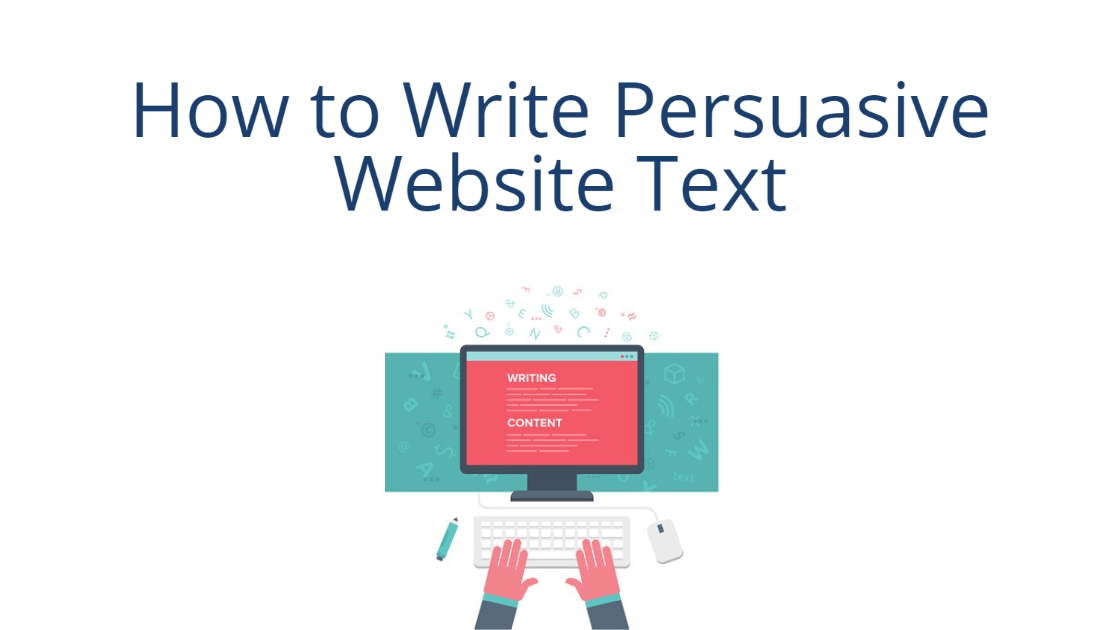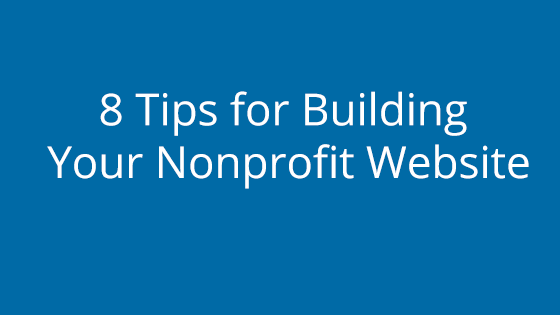Why Persuasion Matters on Websites
When you built your website, you likely had a goal. It doesn’t matter whether your goal was grand or humble, your goal brought your website to life. Well, that and a little elbow grease. So, naturally, you want to make the most of your new web platform. That’s where persuasive website text comes in.
You want to persuade your reader to have the same views you do about your goal. If you want to sell products, your persuasive text can convince readers that your products will benefit them. If you’re promoting your brand, your persuasive text can make the case for why your brand is above others.
How to Write Persuasive Website Text
So, persuasive writing is a skill to invest in. But while many balk at writing, it’s not as hard as it looks. All you need is a game plan and a few tips. Lucky for you, we gathered all the information you need to write your own persuasive text.
Research Your Audience
The first step to acing persuasive writing is to research your audience. You need to know the people you’re communicating with before you can make a case for your website. The better informed you are about your audience, the easier it will be to write persuasively.
How do you figure out who your audience is? We’ll show you.
Your first step is to imagine your ideal website visitor. What are they like? What are their likes and dislikes? Why are they visiting your site?
This imagined person is your ideal audience. This doesn’t mean this is the person who visits your site (that will depend on your marketing), but this is who you want to visit your site. It’s a good starting point.
The next step is to look at your site statistics. This will tell you who is actually visiting your site. If there’s a disconnect between your ideal audience and your actual audience, you may need to finetune some of your marketing strategies.
If you don’t have a website analytics tool installed, we recommend looking into setting one up. Google has a great guide to starting with Google Analytics. Read it here.
In your site statistics, you can view things like your typical visitor demographic and what pages or posts are popular on your site. Use this information to form a clearer picture of your audience. In some cases, it may change how you initially thought of your audience when you first imagined them.
If you have direct access to your audience (like through a podcast or influencer platform), you can set up a survey and ask your audience to fill it out. This will also help you gain insight into your audience’s likes, dislikes, and demographics.
Now take the information you’ve collected and keep it in mind. You’ll need to use it in order to maximize the next steps.
Get the Reader’s Attention
Even the most compelling text is useless if your visitors don’t stop to read it. Luckily, there are strategies you can utilize to increase the chance a reader will pause and read your text.
Strategy 1: Use Site Elements that “Pop”
Manipulating your site elements is a great way to draw attention to your text. This can be anything from adding moving text to placing the text in a colored box.
Just make sure you don’t over-use this strategy in one location. Too many elements vying for your user attention will make it hard for the reader to concentrate on one element and make your site look cluttered.
Strategy 2: Play with Your Font
Changing how your text looks can subtly influence the reader. If something doesn’t fit, it draws the eye. So use this to your advantage. You can change your font, text size, text color or decoration to achieve this effect.
Strategy 3: Establish Importance
You need to not only get their attention, you want to entice them to read further. Make sure that the subject matter makes them want to read on. For example, if you use a larger font size and color, pair it with a phrase or word that makes them curious. If they want to know what you’re talking about, they’ll read the smaller text underneath your heading.
Strategy 4: Use Your Audience Knowledge
Use the research you did on your audience to your advantage. Based on this research, formulate something that will jump out at them and give them pause. What this is will depend on your site design and your audience. This may mean utilizing an image or phrase or concept that you think your audience will immediately pay attention to. Use this in conjunction with the previous strategies to really grab the visitor’s attention.
Make Your Point
Once you have your visitor’s attention , you can move into making your point. Your text’s goal will change depending on your website’s goal, so we can’t give you any specific guidance to make your argument. However, we can give you tips to help urge readers through your text in the most efficient way.
Make the Text Skimmable
If you’re writing more than a few sentences, make sure that your text can easily be skimmed. Users barely read on the web. Instead, they skim. So to impart the most information to your visitors, make sure you cater to this trend. Otherwise, you might lose some of your traction.
A good rule of thumb is to avoid large paragraphs of text. Instead, break these sections into smaller blurbs of a few sentences. You don’t need to cut down on the content – just format it so that the eyes can easily breeze through.
Keep it Simple
You may have a lot of information you want to tell your readers, but visitor attention is short. So it’s recommended you also keep your text short and simple.
Get your most important points across without the fluff. The more succinct you are, the more likely your readers will come away knowing your main points. The more main points you can get the reader to think about, the better chance you have of convincing them to buy your product, listen to your podcast, etc.
If a concept is too complex to impart concisely, consider writing a longer post elsewhere and linking to it. That way, after you’ve thoroughly cinched the visitors attention, they can find more information if they’re inclined.
Tip: Afraid your text is too wordy? A good practice is to write out your text, then look at it and ask, “Can I make any of these sentences shorter?” Doing so can help cut down on unnecessary fluff words, making the text easier to skim and absorb. Don’t be afraid to rearrange your sentence in order to cut down on the words used.
Focus on Your Audience
While your website is ultimately about you or your business, it’s essential to consider your visitor’s role in the equation. Your visitors care about themselves. We’re all a little selfish, but that’s not necessarily a bad thing (especially since we can use it to our advantage). If you truly want to persuade someone, you need to approach the topic from a direction they appreciate.
Appeal to your audience by focusing on what you can do for them. What needs does your business solve for them? How does your podcast enrich their life? Why is your brand the one they should turn to?
People are more likely to engage with your website if they think they are getting something out of it. Whether that’s subscribing to a newsletter that will give them actionable information or buying a product that will make their life better.
Make it about them and you might just gain more traction.
Maximizing Your Persuasive Text
Your persuasive text can only work with the visitors currently landing on your site. Not getting enough visitors? Try maximizing your SEO and marketing. We have a few articles you might find useful:




